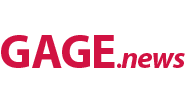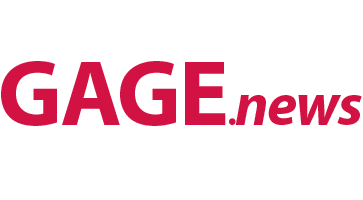When describing the health of the US economy, there is a temptation among economists, market analysts, and politicians to argue that the only true picture of our current situation is a sweeping portrait — only by looking at the broadest of aggregate statistics can you determine the state of play, they argue. But the wide view can ignore important developments unfolding under the surface. Sometimes, even the healthiest-looking person might have high cholesterol.
Right now, the economy seems OK on the surface. GDP growth has been running north of 3% for the last two quarters. In the labor market, the boilerplate appears to be that conditions are gradually cooling, but nothing more, nothing less. For example, despite the slowdown in new hiring, the unemployment rate of 4.4% is still low by historical standards. But there are serious dangers lurking beneath the surface of our economy, and it is better to clearly identify them than to ignore them in favor of broad aggregate measures.
Major employers in industries like homebuilding and restaurants are looking shaky, and they offer ominous signs about the direction of the overall economy. By getting a sense of what sectors and industries are struggling, you can get a forward-looking sense of the economy's trajectory and a clearer-eyed view of the possibility of recession.
The problem with relying on broad bundles of data is that things typically appear placid on an aggregate level right up until things go wrong. Take the turning of the job market tide. In a genuine downturn, the consensus typically assumes a gradual, linear increase in unemployment, similar to the slow, steady grind we are currently experiencing. In reality, however, the risk is nonlinear. When things truly turn south, it usually comes as an abrupt shift that results in a negative self-reinforcing feedback loop. Instead of a slow increase in the unemployment rate of 0.1 percentage points a month, you begin to see a jump of 0.2 points one month and another 0.3 points the next. The ranks of the jobless swell at an ever-increasing pace. There is no real way of knowing when labor market conditions will transition from linear to nonlinear. Historically, the consensus never sees the shift until well after it has arrived. That things seem to be evolving in a stable fashion now doesn't negate the possibility of an unstable move later.
This is why, when making predictions about the future path of the economy, it is essential to get under the hood. And right now, the closer you look, the more worrying things become. Don't just take my word for it, Treasury Secretary Scott Bessent recently acknowledged that sectors of the economy are already in serious downturn territory.
"I think we are in good shape, but I think that there are sectors of the economy that are in recession," Bessent told CNN in an early November interview.
While Bessent didn't go into much detail about the parts of the American economy that concern him, a close read reveals the most worrying signals are coming from four major sources of employment:
Residential housing: There are several signs that employment in home construction is about to hit the skids. The elevated stock of unsold homes means homebuilders will need to throttle back on breaking new ground and focus on selling the inventory they have on hand. Building permits also indicate a potential weakness in future construction activity. Add this up, and it's clear that the industry is likely holding onto too many workers relative to its current activity levels.
- Commercial real estate: Investment in structures for business has been declining for the last six quarters, per the latest GDP data, even accounting for the massive buildout of AI data centers. Architectural billings, an index that tracks nonresidential construction, released by the American Institute of Architects, remain sluggish. Given that a building first has to be drawn up before it can be built, weakness at this planning stage suggests there is no coming boom in commercial real estate construction. Based on the latest release, it appears that soft conditions are likely to persist next year.
Restaurants: We've seen major casual dining establishments, such as Chipotle and Sweetgreen, post weaker sales growth in recent quarters, largely due to weakness in certain consumer cohorts, including 25-34 year olds. Despite this, many chains have said they plan to absorb higher food input prices caused by supply shocks, thereby squeezing their margins. Slower sales and slimmer profits are not a recipe for more hiring. In fact, declining measures of productivity per worker in food services & drinking places suggest that many of these restaurants are overstaffed and may be a signal that layoffs are on the horizon.
- Government: Until now, most of the pressure on public sector employment has been at the federal government level. However, state and local governments are facing pressures as they exhaust COVID-era funding. Given these tough decisions, job losses in state and local governments are a reasonable baseline.
Beyond these big four, there are industries with a smaller employment footprint that also appear to be softening:
- Freight: There are not as many goods moving around the country. Ship counts from Asia to the US are down roughly 30% from last year. Railcar loadings are down roughly 6% against last year. The trucking industry also continues to see shrinking capacity. If there are fewer things to move around the country, then the industry will likewise need fewer drivers, loaders, and various workers. Idle trains and empty containers don't need a lot of people to mind them.
- Mining:Crude oil prices are somewhat below the level needed to profitably invest in new drilling wells, so energy companies are unlikely to hire new staff in this area. The same is true for wood products. Lumber prices are below the levels at which most sawmills can turn a profit. Mining and logging are a relatively small part of private employment, but they're decreasing, not increasing.
- Higher education: Declining enrollment, budget cuts, and reduced federal research funding are taxing the higher education sector. Not surprisingly, more colleges and universities are turning to staffing cuts. Employment across colleges and universities has remained flat so far in 2025 compared to last year, but given the budget shrinkage, it's hard to see how this resilience persists.
It's taken a while to unfold, but the labor slowdown has played out in a standard way: job openings have declined, hiring rates have cooled as companies have slowed their pace of recruiting, and we're now beginning to see an increase in layoffs from historically low levels. The workers at the margins — like younger people and Black Americans — have felt it more than those in more secure positions, which is also not unusual.
Recession-like dynamics across several different industries increase the risk of additional layoffs in those same key sectors in the quarters ahead. Because the hiring rate is low, a small increase in layoffs may have a disproportionately large effect on unemployment. Just because conditions seem to be gradually cooling today does not close the door on a more abrupt shift in labor market conditions later.
The labor market remains a source of downside risk for the broader economy. Because consumption has been a source of support for the economy, a deeper slowdown in the jobs market would create a nasty downward spiral: People cut back on their spending as they lose their jobs, which dries up sources of revenue for businesses that then lay off more workers in response, which further shrinks the amount of household spending, and so on.
Where all this ends up is still up for debate. But while America's economic ocean appears placid at 30,000 feet, beneath the surface, several riptides are brewing.
Neil Dutta is head of economics at Renaissance Macro Research.
The post The 7 parts of the US economy that are already in a recession appeared first on Business Insider



 </noscript>
</noscript> </noscript>
</noscript> </noscript>
</noscript> </noscript>
</noscript> </noscript>
</noscript> </noscript>
</noscript>